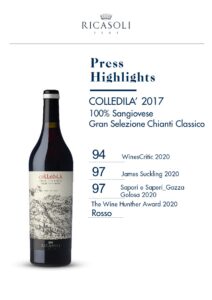
ALL
·
GRAN SELEZIONE
·
CHIANTI CLASSICO
·
CASALFERRO
·
TORRICELLA
·
METODO CLASSICO
·
SPECIALTIES
·
TUSCAN CLASSICS

COLLEDILÀ 2017
100% Sangiovese
CHIANTI CLASSICO DOCG GRAN SELEZIONE
SOIL
This Cru grows on a clayey-limestone soil that is one of the most representative types of Chianti Classico: a very stony soil, rich in calcium carbonate and clay and poor in organic matter.
HARVEST
Hand picking and selection of the best grapes in the Colledilà vineyard on September 21st.
WINEMAKING
The grapes are destemmed and transferred by gravity into 100-hl stainless steel open tanks and then inoculated with selected yeasts. Fermentation temperature 24-27°C with daily punching and maceration on the skins about 14-16 days.
AGEING
18 months in 500-litre tonneaus of which 30% new and 70% second passage.
BOTTLING
February 13, 2020
Vintage Awards
Vineyard
Surface Area: 7,62ha Planted in: 1997
Density: 6.600 plants/ha Altitude: 380 m above sea level
Exposure: South-East Rookstock: 110R
Varieties: Sangiovese VCR23, VCR5, Brolio Clones
Growing Season
This was an atypical year, perhaps unlike any ever registered. Winter was fairly mild and warm. The frost that arrived on 18‐20 April, the drought, the extreme heat that lasted for more than two months, all scorched the earth and the grapevines. For this reason, the leaf removal typically carried out before grape harvest was avoided; instead, the grapevines were left “untidy”, only slightly trimmed, to protect the fruit from the rays of the sun. At the end of August and the first ten days of September, rains came and the temperatures dropped drastically, all the way to the seasonal average.
Press Highlights
Analytical parameters
Alcohol: 14,24% Total acidity: 5,78 g/l
Ph: 3,29 Non-Reducing Extract: 27,46 g/l
Total Polyphenols (in Gallic acid): 2317 g/l








